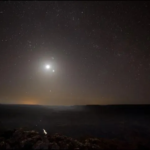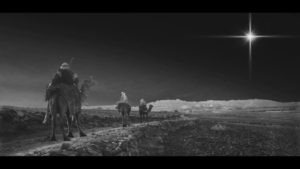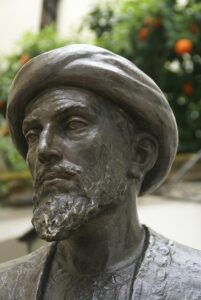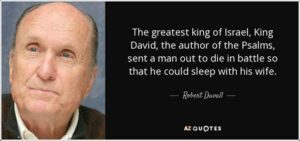Star of Bethlehem & Astronomy – Truly a Star?
Many have wondered if the Star of Bethlehem, “his star” observed by the Magi, was truly a star or something else? If astronomy can corroborate Matthew’s Gospel, it could also establish the birthday timeline for Jesus of Nazareth.
Only Matthew’s Nativity account of Jesus’ birth references the star, yet it holds two compelling clues that can be compared with factual astronomy data produced by NASA astronomers, professors, experts and others. According to Matthew, the Magi saw “his star” twice; first in their homeland, then again in Jerusalem – how can a star appear, disappear and reappear again months later?
MT2:1-2 “…‘Where is He who has been born King of the Jews? For we have seen His star in the East and have come to worship Him.’” (NASB, NKJV)
MT 2:9-10 “When they heard the king, they departed; and behold, the star which they had seen in the East went before them…When they saw the star, they rejoiced with exceedingly great joy. (NKJV)
Astronomy as a science began thousands of years ago with the Assyrians and Chaldeans who charted star and planetary positions and developed the ability to calculate their advance movement in the night skies. Magi were expert astronomers who used this same knowledge and skills. Today’s modern science community considers this ancient expertise to be remarkable.[1]
After thousands of years, major advancements in scientific astronomy began in the 1600s with Johannes Kepler’s formulation of the Three Laws of Planetary Motion.[2] In the 1960s, Bryant Tuckerman took Kepler’s breakthrough to the next level using the then highly advanced IBM 704 vacuum-tube computer to calculate the alignment of planetary stars going back millennia. Using modern software, stellar events can even be narrowed down to specific to global regions such as the Babylonian/Baghdad time zone.[3]
A simple fact known to the Magi astronomers: fixed stars hold their positions while planet-stars normally appear and disappear during their rotation around the Sun. Movement cannot be visually seen at any given moment; rather, changes in position can be observed in periodic views of the night sky or from night to night.
Eventually a moving planet will briefly appear on a single night in close visual proximity with another planet or fixed star known as a conjunction. A separation of less than 1° proximity is considered a rare conjunction event.[4]
Putting the degree proximity into perspective, the pinkie fingernail on a fully extended arm held towards the night sky covers about 1° (1 degree). The moon covers about ½ of a degree.[5]
A single conjunction today is newsworthy such as when UniverseToday.com touted a 3° separation between Venus and Jupiter in 2012.[6] It was a close 3° – chances of witnessing a conjunction of merely 1° proximity can be a once in a lifetime opportunity.
Imagine the excitement if there were seven conjunctions of less than 1° separation in just 18 months? It happened.[7]
Extraordinary planetary conjunctions were exceptionally prolific during the final seven years of the BC era. Among them, from May, 3 BC – June, 2 BC, were seven sensational, rare conjunctions:
3 BC: [8]
May 19: Saturn-Mercury conjunction of only .67°/40′ (arc minutes)†
June 12: Saturn-Venus conjunction of only .12°/7.2′
August 12: Jupiter-Venus conjunction of only .07°/4.2′
September 14: 1st of Jupiter triple conjunction with Regulus of only .33°/19.8′
2 BC:
February 17: 2nd of Jupiter triple conjunction with Regulus of only .85°/51′
May 8: 3rd of Jupiter triple conjunction with Regulus of only .72°/43.2′
June 17: Jupiter-Venus conjunction of a mere .0073°/ 26.2″(arc seconds)
May 19, 3 BC, the Saturn-Mercury conjunction of .67° proximity, only 2% this close are visible from Earth.[9] A person living to the age of 77 has less than a 50-50 chance to possibly witness one.
June 12, 3 BC, Saturn came into .12° conjunction with Venus. While these conjunctions happen about once per year, close encounters like this occur in about 8% of all their conjunctions with just 17% being visible from earth – a once in a century opportunity.[10]

August 12, 3 BC, amazed stargazers with the Jupiter .07° conjunction with Venus.[11] Separation with this extraordinarily tight proximity occurs in a scant 3% of their conjunctions, about once every 120 years.[12]
September 14th ended the 3 BC conjunction activity by initiating the first of a triple conjunction between the king planet Jupiter and the king star Regulus, each with less than 1° proximity.[13] Jupiter-Regulus triple conjunctions recur in 12 and 71-year cycles.[14]
Most striking of this Jupiter-Regulus triple conjunction is the timing and galactic visual location. It played out during the months between the two Jupiter-Venus conjunctions of August 12th and the upcoming June 17th conjunction. Last two of the triple conjunctions took place in the heart of Leo the Lion royal constellation.[15]
June 17, 2 BC, as the sunlight faded away in the early evening western sky of Jerusalem, emerged the amazing sight. A reunion of Jupiter and Venus formed an occultation conjunction displaying an elongated, brilliant star more than twice the size of any other in the heavenly panorama.[16] Amplified by being the two brightest planet-stars, “the star” would have been an impressive phenomenon to behold.

“Occultation” is an astronomy term referring to when one celestial object visually appears to move in front of another. Jupiter-Venus occultations are among the rarest – only 3 might have been visible to the naked eye from Jerusalem since 2 BC.[17]
Rarer still, the Jupiter-Venus occultation occurred inside the Zodiac’s royal constellation of Leo the Lion, the natal sign of Judah.[18] An occultation this close inside Leo only happens once about every 2000 years.
Modern software makes it possible to actually see the remarkably rare series of 3-2 BC conjunctions in an animated, time-lapsed recreation. The amazing heavenly pageant wows crowds and astronomers alike at planetarium observatory Christmas shows.[19]
Magi expert astronomers undoubtedly saw a celestial phenomena compelling a quest traveling hundreds of miles.[20] Advance knowledge of this upcoming event in the heavens may have been a sign that prompted the Magi to consult King Herod in Jerusalem immediately before the brilliant marvel arose.[21]
The question is simple: is “his Star” witnessed by the Magi in Matthew the two Jupiter-Venus conjunctions on August 12, 3 BC, and June 17, 2 BC?
† Degrees ( ° ), arc minute ( ′ ), arc second ( ″ )
Updated October 10, 2023.
This work is licensed under a Creative Commons Attribution-NonCommercial-NoDerivatives 4.0 International License.
REFERENCES:
[1] Eduljee, K. E. “Greek Perceptions of Zoroaster, Zoroastrianism & the Magi.” Zoroastrian Heritage. 2011. <http://zoroastrianheritage.blogspot.com/2011/04/greek-perceptions-of-zoroaster.html> Larson, Frederick A. The Star of Bethlehem. “Why are we hearing this now?” 2018. <http://www.bethlehemstar.net/setting-the-stage/why-are-we-hearing-this-now> Hochhalter, Howward. The Hollow 4 Kids. “A Celestial Road to Truth.” 2022. <https://thehollow4kids.com/a-celestial-road-to-truth/?fbclid=IwAR26hEnI1VfkjcBSRDJp2iyPIaNwPwrDZ0oHYg-pt9V0lumQTxX9WfXk4D0>
[2] “Kepler’s laws of planetary motion.” Encyclopædia Britannica. 2018. <https://www.britannica.com/science/Keplers-laws-of-planetary-motion> Paradis, Andrew. “What are Kepler’s laws of motion and what exactly do they mean?” PhysLink.com | Physics & Astronomy Online. n.d. <http://www.physlink.com/Education/AskExperts/ae613.cfm> Nave, Carl R. “Kepler’s Laws.” Georgia State University | Department of Physics and Astronomy. 2001. <http://hyperphysics.phy-astr.gsu.edu/hbase/kepler.html>
[3] Hayton, Daron. “A Modern Astrologer’s Intellectual Breadcrumbs.” Philadelphia Area Center for History of Science. 2011. <https://web.archive.org/web/20161118000249/http://www.pachs.net/blogs/comments/a_modern_astrologers_intellectual_breadcrumbs/> Tuckerman, Bryant. “Planetary, Lunar and Solar Positions 601 B.C. to A.D. 1 at Five-Day and Ten-Day Intervals.” 1962. <http://www.caeno.org/_Feat/pdf/F027_Reliability_TuckTables.pdf> Houlden, Michael A. and Stephenson, F. Richard. “A Supplement to the Tuckerman Tables.” Memoirs of the American Philosophical Society. Volume 70. “Introduction” “Extent and Precision of Tuckerman’s Tables.” <http://www.caeno.org/_Feat/pdf/F027_Reliability_TuckSupp.pdf> Leverington, David A. Babylon to Voyager and Beyond – A History of Planetary Astronomy. 2003. Chapter 1.2. <http://assets.cambridge.org/97805218/08408/sample/9780521808408ws.pdf>
[4] Basics of Space Flight. Dir. Charles Elachi. 2013 Edition. “The Solar System.” NASA Science | Solar System Exploration. <https://solarsystem.nasa.gov/basics/bsf1-2.php> “What’s a conjunction?” EarthSky. 2017. <https://earthsky.org/astronomy-essentials/what-is-a-conjunction> Coffey, Jerry. “Conjunction.” Universe Today. 7 Jan. 2010. <http://www.universetoday.com/49578/conjunction> Mosley, John. “Common Errors in ‘Star of Bethlehem’ Planetarium Shows.” International Planetarium Society Inc. Reprinted from the Planetarian. 1981. <http://www.ips-planetarium.org/?page=a_mosley1981>
[5] “Angular Measurements.” Cool Cosmos. “Cosmic Reference Guide.” Cool Cosmos. Ventrudo, Brian. “Measuring The Sky.” One-Minute Astronomer. 2009. <http://www.oneminuteastronomer.com/860/measuring-sky>
[6] Cain, Fraser. “Venus-Jupiter Conjunction, March 15th, 2012.” Universe Today. <http://www.universetoday.com/94113/venus-jupiter-conjunction-march-15th-2012 >
[7] Carroll, Susan S. “The Star of Bethlehem: An Astronomical and Historical Perspective.” Twin Cities Creation Science Association. 1997. <http://www.tccsa.tc/articles/star_susan_carroll.pdf> Hochhalter, Howard. The Hollow 4 Kids. “A Celestial Road to Truth.” 2022. <https://thehollow4kids.com/a-celestial-road-to-truth/?fbclid=IwAR26hEnI1VfkjcBSRDJp2iyPIaNwPwrDZ0oHYg-pt9V0lumQTxX9WfXk4D0> Hochhalter, Howard. The Hollow 4 Kids. “Star of Bethlehem Timeline.” 2022. <https://time.graphics/line/04b2774f964bedcd8a185a5860b2767d> Hochhalter, Howard. “The Star of Kings and the Magi.” March 21, 2023. video. <https://www.youtube.com/watch?v=KGTmwuqznec>
[8] “Angle converter.” Unit Juggler. <https://www.unitjuggler.com/angle-conversion.html> “Angular Measurements.” Cool Cosmos. <http://coolcosmos.ipac.caltech.edu/cosmic_classroom/cosmic_reference/angular.html> Ventrudo, Brian. “Measuring The Sky.” “Venus and Jupiter’s Upcoming Conjunction.” Universe Today. 2004. <http://www.universetoday.com/10006/venus-and-jupiters-upcoming-conjunction/#ixzz2B6cvKJEt> Carroll. “The Star of Bethlehem: An Astronomical and Historical Perspective.” Phillips, Tony. “A Christmas Star for SOHO.” NASA Science | Science New. 2018. <http://science.nasa.gov/science-news/science-at-nasa/2000/ast16may_1> “Birth of Jesus.” Navsoft.com. 2012. <http://navsoft.com/html/birth_of_jesus.html> Martin, Ernest L. The Star of Bethlehem – The Star That Astonished the World. Chapter 1 & 4. 2003. <http://askelm.com/star/star000.htm#_edn11%3E%20%3Chttp://web.archive.org/web/20170111193244/http://www.askelm.com/star/star001.htm> Rao, Joe. “How to Measure Distances in the Night Sky.” Space.com. 2010. <http://www.space.com/8319-measure-distances-night-sky.html> Cain. “Venus and Jupiter’s Upcoming Conjunction.” Sielaff, David. “An Important August 2 B.C.E. Conjunction.” A.S.K. (Associates For Scriptural Knowledge). 2005. <http://www.askelm.com/news/n051211.htm> Clevenger, John. “Astronomy, Astrology, and the Star of Bethlehem.” Lake County (Illinois) Astronomical Society. 2012. <http://www.lcas-astronomy.org/articles/display.php?filename=the_christmas_star&category=miscellaneous> Haley, A. S. “The Star of Bethlehem and the Nativity.” Anglican Curmudgeon. 2009. <http://accurmudgeon.blogspot.com/2009/10/star-of-bethlehem-and-nativity.html> Newman, Robert C. “The Star of Bethlehem: A Natural-Supernatural Hybrid?” Interdisciplinary Bible Research Institute. IBRI Paper (2001). <http://web.archive.org/web/20171016111146/http://www.newmanlib.ibri.org/Papers/StarofBethlehem/75starbethlehem.htm> Beatty, Kelly. “Venus and Jupiter: Together at Last.” Sky & Telescope. 2015. <http://www.skyandtelescope.com/astronomy-news/observing-news/venus-and-jupiter-a-dazzling-duo-062520154> Ratnikas, Algis. “Timeline 499BCE – 1BCE.” Timeslines of History. n.d. <http://timelines.ws/0D499_1BC.HTML> Pratt, John P. “The Star of Bethlehem’s Forerunner.” JohnPratt.com. Reprinted from Meridian Magazine. 2000. <http://www.johnpratt.com/items/docs/lds/meridian/2000/xmas_star.html> Rjvanderbei. “Searching for the Star of Bethlehem (updated).” National Geographic News Watch . 26 Dec. 2011 <http://newswatch.nationalgeographic.com/2011/12/26/searching-for-the-star-of-bethlehem> Dickinson, David. “Is This Month’s Jupiter-Venus Pair Really a Star of Bethlehem Stand In?” Universe Today. October 14, 2015. <https://www.universetoday.com/122738/is-this-months-jupiter-venus-pair-really-a-star-of-bethlehem-stand-in/> Hochhalter, Howward. The Hollow 4 Kids. “Star of Bethlehem Timeline.” 2022. <https://time.graphics/line/04b2774f964bedcd8a185a5860b2767d>
[9] Curtis, Jan. “Predictable Astronomical Events.” Alaska Climate Research Center. n.d. Chapter 2. <http://climate.gi.alaska.edu/Curtis/astro.html> Curtis, Jan. “Mercury-Saturn Conjunctions (2000-2078 AD).” Alaska Climate Research Center. n.d. <http://climate.gi.alaska.edu/Curtis/graf/MeSc100.gif> “Planetary Conjunctions.” National Oceanic and Atmospheric Administration (NOAA). Earth System Research Laboratory. <http://web.archive.org/web/20160304124051/http://laps.noaa.gov/albers/ast/conjun/conjun.html>
[10] “Planetary Conjunctions.” National Oceanic and Atmospheric Administration (NOAA). Curtis. “Mercury-Saturn Conjunctions (2000-2078 AD).” Curtis, Jan. “Venus-Saturn Conjunctions Minimum Separation 500-Events (2000-2482).” Alaska Climate Research Center. n.d. <http://climate.gi.alaska.edu/Curtis/graf/VSc500.gif>
[11] Rao, Joe. “Saturday’s Venus-Jupiter Encounter May Explain Bible’s Star of Bethlehem.” Space.com. 2016. <http://www.space.com/33866-venus-jupiter-conjunction-star-of-bethlehem.html> Martin. The Star of Bethlehem. Chapter 4. Olson, Ross. “Summary of Conjunctions of Planets (“wandering stars”).” 1997. Twin Cities Creation Science Association. n.d. <http://www.tccsa.tc/articles/star_dates.html> “Star of Bethlehem will be seen for the first time in 800 years.” San Miguel Times. photo. https://sanmigueltimes.com/2020/12/star-of-bethlehem-will-be-seen-for-the-first-time-in-800-years>
[12] Fazekas, Andrew. “Jupiter Conjunction Peaks Thursday—Easy-to-See Sky Show.” National Geographic Daily News. 2012. <http://news.nationalgeographic.com/news/2012/03/120313-conjunction-venus-jupiter-sky-space-science> “Venus And Jupiter Will Pass 42 Arc seconds Apart On May 17.” Press Release – Marshall Space Flight Center. SpaceRef.com. 2000. <http://www.spaceref.com/news/viewpr.html?pid=1819> Curtis, Jan. “Venus-Jupiter Conjunctions Minimum Separation 500-Events (2000-2488 A.D.)” Alaska Climate Research Center. n.d. <http://web.archive.org/web/20190811095220/http://climate.gi.alaska.edu/Curtis/graf/VJc500.gif> Curtis, Jan. “Venus-Jupiter Conjunctions 100-Events.” Alaska Climate Research Center. n.d. <http://climate.gi.alaska.edu/Curtis/graf/VJc100.gif> Rao, Joe. “Earthlings Dazzled by Venus-Jupiter Close Encounter.” Discovery News. 2012. <http://news.discovery.com/space/venus-jupiter-conjunction-120312.html> Cain. “Venus and Jupiter’s Upcoming Conjunction.”
[13] Kidger, Mark R. “Possible Explanations of the Star of Bethlehem.” Mark Kidger`s Comet and Asteroid Observing Home Page n.d.<http://www.observadores-cometas.com/Star_of_Bethlehem/English/Possible.htm> Kidger, Mark R. The Star of Bethlehem: an Astronomer’s View. 1999. <http://books.google.com/books?id=_ISv1gPQJV4C&lpg=PA25&ots=WsfPW9KFFR&dq=anatole%2C%20greek%2C%20magi&pg=PP1#v=onepage&q=anatole,20greek,%20magi&f=false> “2-planet (1974-2068)” National Oceanic and Atmospheric Administration (NOAA). n.d. <http://web.archive.org/web/20160412052726/http://laps.noaa.gov/albers/conjun/for008.future> Bunson, Matthew. Encyclopedia of the Roman Empire. “Jupiter.” 2002. <https://archive.org/details/isbn_9780816045624>
[14] Haley. “The Star of Bethlehem and the Nativity.” Konnen, G.P. and Meeus, J. “Triple Conjunctions, Twins and Triplets,” Journal of the British Astronomical Association. vol.93, no.1, p.20-24. Bibliographic Code 1982JBAA…93…20K. Harvard-Smithsonian Center for Astrophysics. n.d. <http://articles.adsabs.harvard.edu//full/1982JBAA…93…20K/0000023.000.html>
[15] “Birth of Jesus.” Navsoft.com. Carroll. “The Star of Bethlehem: An Astronomical and Historical Perspective.” Newman. “The Star of Bethlehem: A Natural-Supernatural Hybrid?” Phillips. “A Christmas Star for SOHO.” Haley. “The Star of Bethlehem and the Nativity.”
[16] “Planetary Conjunctions.” National Oceanic and Atmospheric Administration (NOAA. Bogan, Larry. “Mutual Planetary Occultations Past and Future.” Larry Bogan’s Website. Cambridge Station, Nova Scotia. 1999. <http://www.bogan.ca/astro/occultations/occltlst.htm> “Haley. “The Star of Bethlehem and the Nativity.” Carroll. “The Star of Bethlehem: An Astronomical and Historical Perspective.” p 10. “Venus And Jupiter Will Pass 42 Arc seconds Apart On May 17.” SpaceRef.com. Martin. The Star of Bethlehem. Chapter 1. Phillips. “A Christmas Star for SOHO.” Rjvanderbei. “Searching for the Star of Bethlehem (updated).” “Star of Bethlehem: Two points of view.” KTBS3abc.” photo. 2017. https://www.ktbs.com/news/arklatex-indepth/the-star-of-bethlehem-two-points-of-view/article_6b8b84c6-e5a3-11e7-806a-9fdf6d02fb5a.html>
[17] “occultation.” NASA Aerospace Science & Technology Dictionary. <https://www.hq.nasa.gov/office/hqlibrary/aerospacedictionary/508/o.html> Ricci, Pierpaolo. “Occultations Between Planets from the Year 0 To 4000.” The Sky and Its Phenomena. n.d. <http://www.pierpaoloricci.it/dati/occpia_eng.htm> Bogan, Larry. “Mutual Planetary Occultations Past and Future.”
[18] Genesis 49:8-10; Numbers 23:3-9, 21-24. “Birth of Jesus.” Navsoft.com. Carroll. “The Star of Bethlehem: An Astronomical and Historical Perspective.” Newman. “The Star of Bethlehem: A Natural-Supernatural Hybrid?” Phillips. “A Christmas Star for SOHO.” Haley. “The Star of Bethlehem and the Nativity.”
[19] Fazekas, Andrew. “Christmas Star Mystery Continues.” National Geographic Daily News. 2008. http://web.archive.org/web/20170808084630/http://news.nationalgeographic.com/news/2008/12/081224-star-bethlehem.html> Martin. The Star of Bethlehem. Chapter 1. Haley, A. S. “The Star of Bethlehem and the Nativity.” Larson. The Star of Bethlehem. Hochhalter. “Star of Bethlehem Timeline.”
[20] Carroll. “The Star of Bethlehem: An Astronomical and Historical Perspective.” Hochhalter. The Hollow 4 Kids. “A Celestial Road to Truth.” 2022. <https://thehollow4kids.com/a-celestial-road-to-truth/?fbclid=IwAR26hEnI1VfkjcBSRDJp2iyPIaNwPwrDZ0oHYg-pt9V0lumQTxX9WfXk4D0>
[21] “Birth of Jesus.” Navsoft.com. “Historical Events.” Navsoft.com. <http://navsoft.com/html/historical.html> Newman. “The Star of Bethlehem: A Natural-Supernatural Hybrid?” Phillips. “A Christmas Star for SOHO.” Mosley, John. “Common Errors in ‘Star of Bethlehem’ Planetarium Shows.” Beatty, Kelly. “Venus and Jupiter: Together at Last.” Sky & Telescope.


 Three of David’s brothers were fighting in Israel’s army supported by their father who routinely sent David to them with supplies. During one visit, David was astonished to see Israel’s army afraid of an ace giant Philistine warrior named Goliath who challenged and taunted Israel’s army daily.
Three of David’s brothers were fighting in Israel’s army supported by their father who routinely sent David to them with supplies. During one visit, David was astonished to see Israel’s army afraid of an ace giant Philistine warrior named Goliath who challenged and taunted Israel’s army daily. Uriah was summoned from the battlefield at the behest of David under the pretense of earning a well-deserved leave from duty. The true reason was to give Bath-Sheba an opportunity to have marital relations with her husband to legitimize her pregnancy.
Uriah was summoned from the battlefield at the behest of David under the pretense of earning a well-deserved leave from duty. The true reason was to give Bath-Sheba an opportunity to have marital relations with her husband to legitimize her pregnancy.